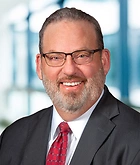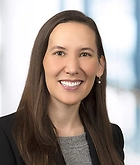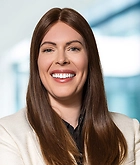U.S. Supreme Court Defends High School Student’s First Amendment Rights
On June 23, 2021, the Supreme Court of the United States issued a decision that limits a public school’s ability to regulate student speech that occurs off-campus at the K-12 level.
The case at issue, Mahoney Area School Dist. v. B.L., 594 U. S. ___ (2021), involved a public high school student who, while off campus and during non-school hours, used and transmitted to her Snapchat friends vulgar language and gestures criticizing both the school and the school’s cheerleading team. In response, the school suspended the student from the cheerleading team for one year. The district court found in the student’s favor and ordered that the school reinstate the student to the cheerleading team. In affirming the District Court’s conclusion, the Third Circuit concluded that the Court’s previous decision in Tinker v. Des Moines Independent Community School Dist., 393 U.S. 503 (1969) did not apply because schools have no special license to regulate off-campus student speech.
The Court considered whether its Tinker rule — that public school officials may regulate speech that would materially and substantially disrupt the work and discipline of the school — applies to speech that occurs off campus. The Court affirmed the Third Circuit’s decision, but disagreed with the Third Circuit’s reasoning that public schools generally do not have the authority to discipline off-campus speech. The Court concluded that public schools may have a special interest in regulating off-campus student speech in some instances. The Court declined, however, to set forth a general First Amendment rule concerning what constitutes off-campus speech or when or how First Amendment standards should give way to a school’s special need to prevent things like substantial disruption of learning-related activities. The Court did acknowledge circumstances that may implicate a school’s regulatory interests including serious or severe bullying or harassment targeting particular individuals; threats aimed at teachers or other students; the failure to follow rules concerning lessons, the writing of papers, the use of computers, or participation in other online school activities; and breaches of school security devices.
In explaining that a school’s regulatory interests do have limits, the Court set forth three features of off-campus speech that often, if not always, diminish a school’s need to regulate it: (1) a school, in relation to off-campus speech, will rarely stand in loco parentis (or in the place of students’ parents under circumstances where the children’s actual parents cannot protect, guide, and discipline them); (2) from the student speaker’s perspective, regulations of off-campus speech, when coupled with regulations of on-campus speech, include all of the speech a student utters during the full 24-hour day; and (3) the school itself has an interest in protecting a student’s unpopular expression, especially when the expression takes place off campus.
The Court concluded that the circumstances of the student’s speech, in this case, diminished the school’s interest in regulation. While the student’s speech was crude and vulgar, it did not amount to fighting words and was not obscene. The Court also considered when, where, and how the student spoke. Specifically, the strength of the school’s interest in teaching good manners and punishing the use of vulgar language was weakened considerably by the fact that the student spoke outside of the school on her own time. The student did not identify the school or target any member of the school community. The student also transmitted her speech through a personal cell phone to an audience in a private group.
In response to the school’s argument that it was trying to prevent disruption (if not within the classroom, then within the bounds of a school-sponsored extracurricular activity), the Court concluded that it found no evidence of substantial disruption. The record showed only that a few 5 to 10 minute discussions on the topic took place in an algebra class and that some members of the cheerleading team were upset, both of which do not satisfy the level of substantial disruption required by the Tinker standard.
In response to the school’s argument that the speech had an effect on team morale, the Court concluded that nothing in the record indicated such an effect. The Court suggested, however, that a serious decline in team morale — to the point where it could create a substantial interference in the school’s efforts to maintain team cohesion — may make a difference.
While the Court acknowledged that public schools may have a special interest in regulating some off-campus student speech, the special interests offered by the school in this case were not sufficient to overcome the student’s interest in free expression.
Impact on Higher Education
Public institutions are bound by the First Amendment. While private institutions are not similarly bound, many have policies that provide for freedom of speech and expression that would similarly protect student speech. Notably, Justice Alito’s concurrence in Mahoney cautioned that the Court’s opinion should “not be misunderstood” as applying to speech at higher education institutions. Specifically, Justice Alito stated:
This case does not involve speech by a student at a public college or university. For several reasons, including age, independence, and living arrangements of such students, regulation of their speech may raise very different questions from those presented here. I do not understand the decision in this case to apply to such students.
Despite Justice Alito’s caution, we anticipate that Mahoney may nevertheless impact how higher education institutions regulate speech — specifically, off-campus speech via social media. Institutions may hesitate to limit such speech that does not clearly fall into established categories of unprotected speech, such as fighting words, obscenity, violation of codes of conduct or policy, harassment, and threats.
Please contact your Vorys attorney or a member of the Vorys higher education team with specific questions or for assistance with review or implementation of speech and/or social media policies.



